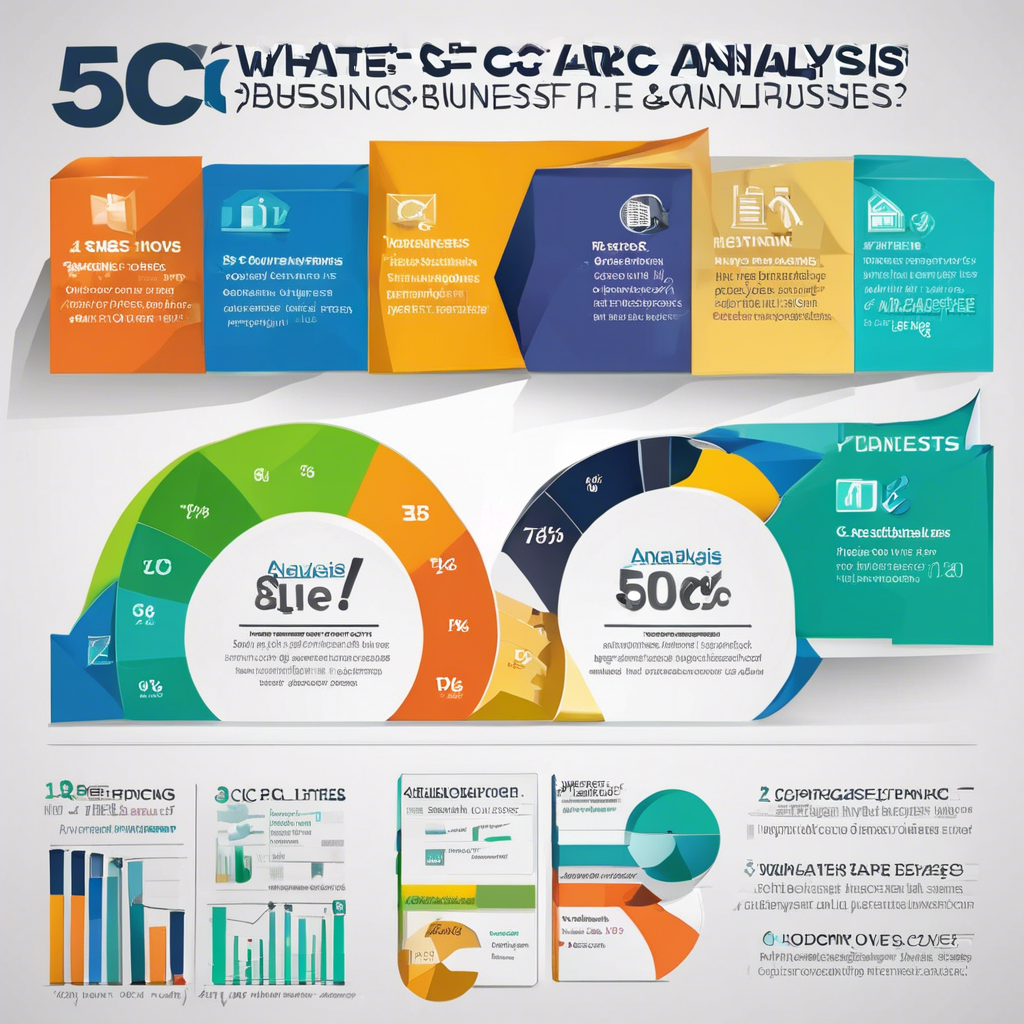The 5 C’s analysis is a renowned business framework that has been widely used as a strategic tool to evaluate and assess various aspects of a business, especially in the context of assessing credit risk and making investment decisions. This comprehensive analysis ensures that all critical factors are considered before making significant financial commitments. So, what are these 5 C’s, and how do they help in business evaluation? Let’s dive right in.
**Character:**
The first C, ‘Character,’ pertains to the integrity and reputation of the business or its management. It involves analyzing the honesty, competence, and reliability of the people behind the business. Assessing character involves researching the background of key individuals, including their experience, qualifications, and track record in handling past ventures. This evaluation aims to gauge their ability to manage the business effectively, make sound decisions, and uphold ethical standards. Lenders and investors often consider strong character as a positive indicator of a business’s likelihood to succeed and repay its obligations.
**Capacity:**
Capacity refers to the ability of a business to generate sufficient cash flow to repay its debts and meet its financial obligations. This analysis involves delving into the business’s financial statements, cash flow projections, and historical performance. Lenders and investors examine whether the business has the necessary resources and operational efficiency to service its debt and sustain growth. Capacity assessment may include evaluating the business’s revenue streams, profitability, debt-to-income ratio, and overall financial health. A strong capacity reflects the business’s financial stability and ability to weather economic challenges.
**Capital:**
The third C, ‘Capital,’ focuses on the financial investment and equity the business owners have committed to the venture. Lenders and investors assess whether the business owners have ‘skin in the game,’ which demonstrates their commitment and confidence in the business. Adequate business capital is essential as it provides a buffer against unforeseen expenses, economic downturns, and potential losses. Additionally, it shows the business owners’ capacity to contribute to the business’s growth and their willingness to share risks with lenders or investors.
**Collateral:**
Collateral refers to the assets that a borrower pledges to secure a loan. This analysis involves assessing the value and quality of the assets offered as security for a loan or investment. Collateral can include real estate, equipment, inventory, or other valuable assets that can be liquidated if the borrower defaults on their obligations. A robust collateral position provides lenders and investors with a safety net, reducing their risk exposure. It also demonstrates the borrower’s commitment to the investment and their willingness to mitigate potential losses.
**Conditions:**
The fifth C, ‘Conditions,’ pertains to the broader context in which the business operates, including market conditions, industry trends, and economic factors. Analyzing conditions involves studying the industry’s growth potential, competitive landscape, regulatory environment, and potential risks or opportunities. This assessment helps lenders and investors understand the external factors that may impact the business’s performance and financial health. It also allows them to evaluate the appropriateness of the business strategy and its ability to adapt to changes in the market.
Why is the 5 C’s analysis so important? This comprehensive framework provides lenders, investors, and stakeholders with a holistic view of a business’s creditworthiness and potential for success. By assessing character, lenders can gauge the integrity and competence of the management team. Capacity analysis ensures that the business has the financial strength to repay its debts. Capital consideration highlights the owner’s commitment and reduces the risk burden on lenders and investors. Collateral provides security for loans, reducing potential losses. Finally, evaluating market conditions ensures the business is well-positioned to take advantage of opportunities while managing risks effectively.
This powerful tool has been used by financial institutions, investors, and business analysts to make informed decisions. For lenders, it helps determine the credit risk associated with a loan and the likelihood of repayment. Investors use it to assess the potential return on their investment and the risks involved. Moreover, the 5 C’s analysis encourages business owners to thoughtfully consider their strategy, ensuring they have a well-rounded and robust approach to managing their venture.
In conclusion, the 5 C’s analysis is a comprehensive and widely recognized approach to business evaluation. Its structured framework enables lenders, investors, and business owners to make more informed and prudent decisions. By examining character, capacity, capital, collateral, and conditions, stakeholders can gain valuable insights into a business’s potential and risks, which are crucial for success in today’s competitive business environment. When used effectively, this analysis can contribute significantly to sound financial decision-making and business growth.

